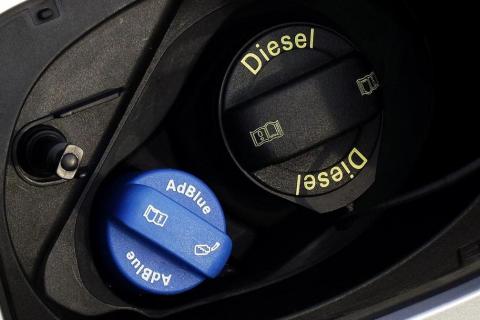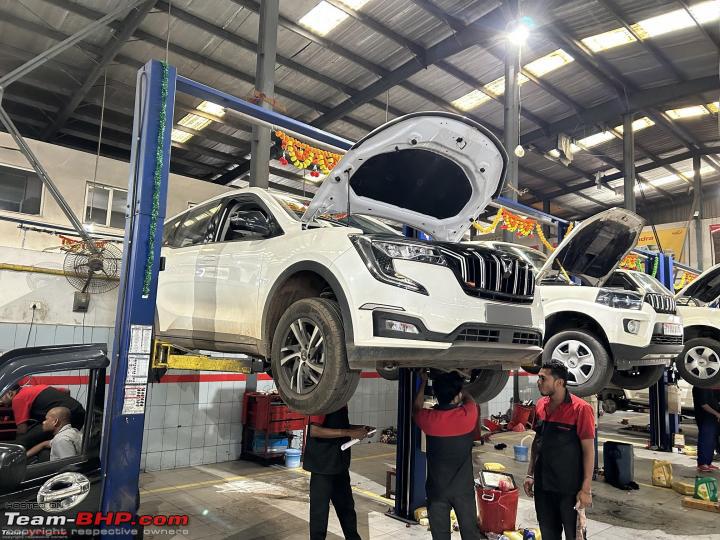How to avoid DPF issues: Important tips and advice
The complicated exhaust system makes lives a bit difficult for the owners but if you are prepared for it, owning a diesel car shouldn’t be that much of an issue.
BHPian Omkar recently shared this with other enthusiasts.
Emissions and performance are like the Yin and Yang of the automotive industry. While any enthusiast would love to drive a fire-breathing monster, they’re not very kind to nature. Since 2000, India adopted the Bharat Stage (BS) Emission Standards which were modelled on the EU norms. We’re currently in the BS6 era and that has brought major changes to the automobiles that are rolling off the factory floor. Diesel cars specifically have had to go through a lot of modifications to meet emission norms.
So, what are these changes and what are the things you need to keep in mind to buy a diesel car in 2023? Let’s dive deep into that.
The European Union switched to Euro-V standards in 2009. This was the big change that required diesel vehicles to be equipped with a diesel particulate filter (DPF) by 2011. Euro-VI further tightened the strings on diesel engine emissions. In India, we skipped the Euro-V and jumped straight to Euro-VI or BS6. If you look at the history, over different stages of emission norms, various technologies were introduced to reduce the emissions in diesel engines. Initially, higher injection pressures and high-pressure common rail systems were added to reduce the particulate matter (PM). This was followed by the EGR systems which helped reduce the NOx levels. Then there was diesel oxidation catalyst (DOC), diesel particulate filter (DPF), selective catalytic reduction (SCR) and diesel exhaust fluid (DEF) that followed.
Before we get into the systems that reduce the emissions, let’s quickly go through the major emission components that are regulated in the norms. In the BS6 standards, limits have been set over 3 emissions – Nitrogen Oxide (NOx) Limit (80 mg), Particulate Matter (PM) Limit (4.5 mg/km) and HC (Hydrocarbons) + NOx (170 mg/km).
- Nitrogen Oxide (NOx) – If you’re based out of Delhi, smog is something you are more than familiar with. NOx is the primary ingredient of smog and even acid rain. Nitrogen Oxides are formed due to the high operating temperatures of diesel engines.
- Particulate Matter (PM) – In diesel engines, PM is formed due to unburned fuel. The excess fuel during the combustion process leaves the cylinder and through the exhaust system, you will see it in the form of black smoke. They are classified by the size of the matter and denoted as a number ahead of the letters ‘PM’. For instance, PM10 are particles that are 10 microns or smaller. They can be inhaled and cause coughing & irritation. PM2.5 (something you see on air filters these days) particles are small enough to mix into the bloodstream and are the more dangerous ones as some studies have shown that these contain carcinogenic compounds.
- Hydrocarbons (HC) – They’re combustible compounds made up of hydrogen and carbon. If you remember your chemistry, you know this is a very vast topic. What’s in focus are propane, butane, and methane. These are formed due to improper combustion as there are lean and rich areas in the cylinder since the fuel can’t get everywhere evenly. Thus, you have unburnt hydrocarbons coming out of your exhaust.
Image source
Now that we know what’s coming out of the tailpipe, we can look at the stuff that reduces the emissions.
Exhaust Gas Recirculation (EGR) –
Image Source
As mentioned earlier, back in the day, higher injection pressures and high-pressure common rail systems were used to meet the particulate matter (PM) standards. While this was working well, high-pressure systems resulted in higher operating temperatures which led to the increase in NOx emissions. Hence a system had to be developed to control the NOx by reducing the operating temperature. EGR does exactly this by circulating small amounts of exhaust gas into the intake manifold. The exhaust gas mixes with the incoming air/fuel mixture and dilutes it, thus reducing peak combustion temperatures and pressures. This further results in lower NOx emissions.
There are two major components of the EGR – the EGR Valve and the EGR Cooler. The valve is responsible for controlling the flow of exhaust gases which re-enter the intake stream. The EGR cooler, as the name suggests, is responsible for cooling down the exhaust gases before they are re-introduced into the intake system. It uses engine coolant to lower the temperature.
The EGR flow depends on the engine operating conditions. For instance, higher EGR flow is necessary during cruising and mid-range acceleration as the combustion temperatures are high. Similarly, for low speeds, the flow is reduced. During engine warm-up, idle and full throttle conditions, there is no EGR flow to avoid any adverse effect on drivability or efficiency.
Diesel Particulate Filter (DPF) –
Image source
When the emission norms were further tightened on the particulate matter limits, DPF was introduced. Adding a filter seems like a simple solution, but it comes with its own set of complexities. DPF is essentially a high-density filtration system for particulate matter. Inside, you will find a very fine filter that can trap particles as fine as 1 micron (one-thousandth of a millimetre). The filter has a maze-like pattern which means that particulate matter cannot escape, and as the material is porous it allows the gas to pass through. Hence the soot and ash get collected in the filter over a period of time. If you’re wondering what’s the difference between soot and ash? Soot is made of unburnt hydrocarbons which are formed when fuel is heated in the absence of oxygen. So, the more efficient the combustion, the less soot there will be. Ash is formed after burning off the soot. It cannot be burnt away and over a long period, gets collected in the DPF.
In regular driving conditions, soot keeps getting collected in the DPF and creates back pressure which kicks in ‘Regeneration’. This is a process where the soot collected in the DPF is burnt off. If the temperature of the exhaust gas is high enough, the soot collected in the DPF can be burnt off. There are two types of DPF regeneration – Active and Passive. Passive regeneration is done by driving on the highway at a speed of 60-80 km/h at least for a couple of hours. This helps increase the temperature of the exhaust and clear off the soot naturally. If you want to have a longer life for your diesel engine, it’s recommended to have passive regeneration regularly. So, highway driving at least once a month is a must.
If the soot isn’t cleared off by Passive Regen, the car goes into Active Regen mode. This is a process where all the soot is burned off all at once. As a thumb rule, remember that the fewer active regens your car sees, the better it is for its life. So, make sure that you get those highway kilometres in your car so that the passive regeneration takes care of your DPF. Your car can be stationary when the Active regen is performed and different cars have different procedures to follow. Here’s a video explaining the procedure for Hyundai Creta.
Now while the DPF takes care of the particulate matter, the high temperatures do lead to the formation of NOx. This must be lowered again and that is done with the help of an SCR.
Selective Catalytic Reduction (SCR) and Diesel Exhaust Fluid (DEF) –
Image Source
In the exhaust system, the SCR sits after the DPF and is responsible for reducing the NOx emissions. It does so by injecting DEF into the exhaust gases. DEF also known as AdBlue is a urea-based chemical that turns to ammonia when exposed to heat. This sets off a reaction that converts the nitrogen oxides into nitrogen and water. Generally, you will need to top up the AdBlue tank every 10,000 kilometres. Here’s an important tip regarding the DEF – Make sure that the fluid does not fall on your car paint. It is toxic and even a single drop of DEF can lead to corrosion of the metal over a few months.
Now from theory to the real world. How is it to live with a BS6 diesel car? What are some of the things that you should keep in mind? Is diesel for you? Let’s go through some do’s and don’ts of owning a diesel car. BHPian ninjanayak has also answered some of the common questions regarding the DPF.
Get out and drive
We’ve talked about passive and active DPF regeneration and the lesser active regeneration your car goes through, the longer your DPF will last. The focus is to get as much soot cleared off as possible with passive regeneration. This means that you need to regularly hit the highways (at least once a month) where you can reach speeds of up to 60-80 km/h for a prolonged period.
No lugging or driving at low revs
This one’s for the manual transmission owners and a good practice in general too. Once you have your car properly warmed up, don’t drive at slow speeds in higher gears. Keep the engine hot and let the soot burn off. For automatic cars, the gearbox logic takes this into account and keeps the engine revs high and never lugs.
Don’t drive on low fuel
While low fuel is sometimes unavoidable, try to keep the fuel indicator out of the red zone. Low fuel can put excess pressure on the fuel pump which could get damaged. Also, if air gets sucked in, it can increase friction on the internal components of the engine. Impurities in the fuel usually get settled at the bottom which might get sucked in during combustion which is harmful for the engine.
Use the right engine oil
This is something that’s applicable to both petrol and diesel cars, but more so in diesel cars with DPF. Engine oil lubricates the cylinder surface, and it gets burnt during combustion. Hence, your exhaust includes burnt engine oil which gets collected in your DPF in the form of metallic compounds called SAPS (sulfated ash, phosphorous, and sulfur). Every manufacturer has a set limit for the SAPS content (mid / low / high) based on the engine. So, if the wrong oil with high SAPS content is used in an engine that’s not designed for it, the DPF can get clogged.
Regular maintenance & DPF Check
It’s important that you follow your service schedule religiously. Especially if you haven’t driven your car much, the service centre can get the active regeneration done for you. Diagnostic tools should be able to let you know the condition of your DPF as well. Also, mechanics will be able to check the condition of various components of the exhaust system.
Smoke check
Concerning diesel vehicles, since there are a lot of components in the exhaust system and when one of them fails, it can result in the vehicle breaking down. It’s better to get the system periodically checked and always check the colour of the exhaust smoke. If you do notice excessive white / blue / black smoke, get your car checked ASAP. This could be one of the first signs of a breakdown, so it’s better if you get it sorted before there’s some major failure.
Don’t ignore the DEF levels
Be sure that your DEF levels are maintained. You will get a warning light on your instrument cluster when the level is low, don’t ignore it. If the fluid runs out, the car will go into limp mode and in some cases, it won’t start until the fluid is topped up. Here’s an important note – Whenever topping up the DEF, make sure that it doesn’t spill on your car’s paint. Even a single drop will cause the surface to rust in just a few months.
Other good habits
Instead of just turning on the car and letting it idle before you get to drive, it’s advisable to drive slowly for a few kilometres so that the engine warms up. Also, when you reach your destination, don’t immediately turn off the car. Let it idle for some time so that you’re not shutting down the turbo abruptly. Give about 30 seconds before shutting down your car to avoid premature wear of your turbo.
Requesting you to please contribute with additional tips for cars with DPF.
Final thoughts
There’s no denying that emission norms have made things tricky for someone who wants to buy a new diesel car. The complicated exhaust system makes lives a bit difficult for the owners, but if you are prepared for it, owning a diesel car shouldn’t be that much of an issue. BHPian ph03n!x has done over 55,000 km with his Thar and hasn’t had any DPF related issues.
If you don’t want to deal with the DPF and the strings that it comes attached with, you can opt for a used car that doesn’t have a DPF. But if your usage is primarily going to be short trips around the city, it’s best if you consider other fuel types like petrol, hybrid or even electric.
Sources : Wikipedia, 1, 2, 3
Check out BHPian comments for more insights and information.
Source: Read Full Article
















